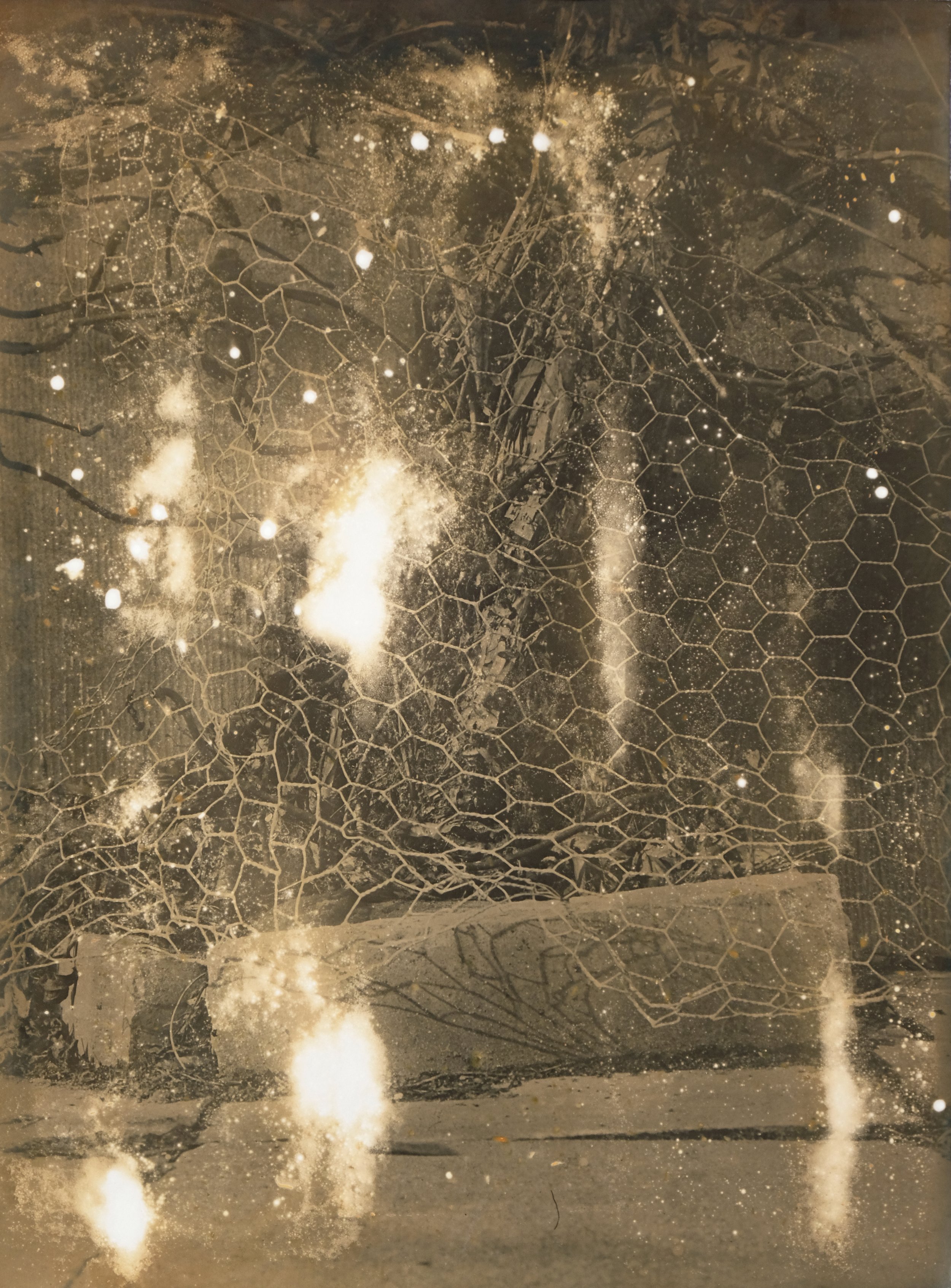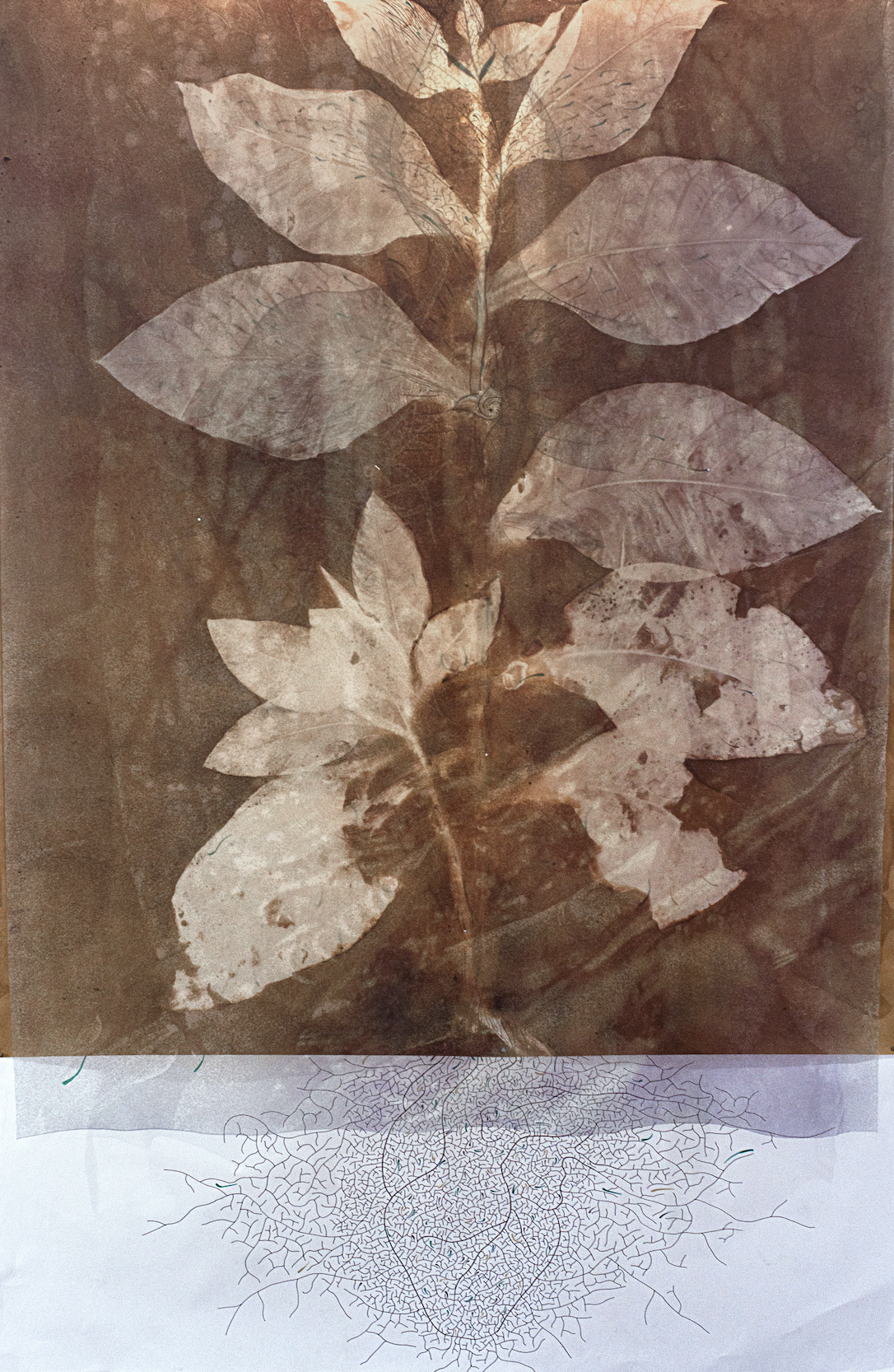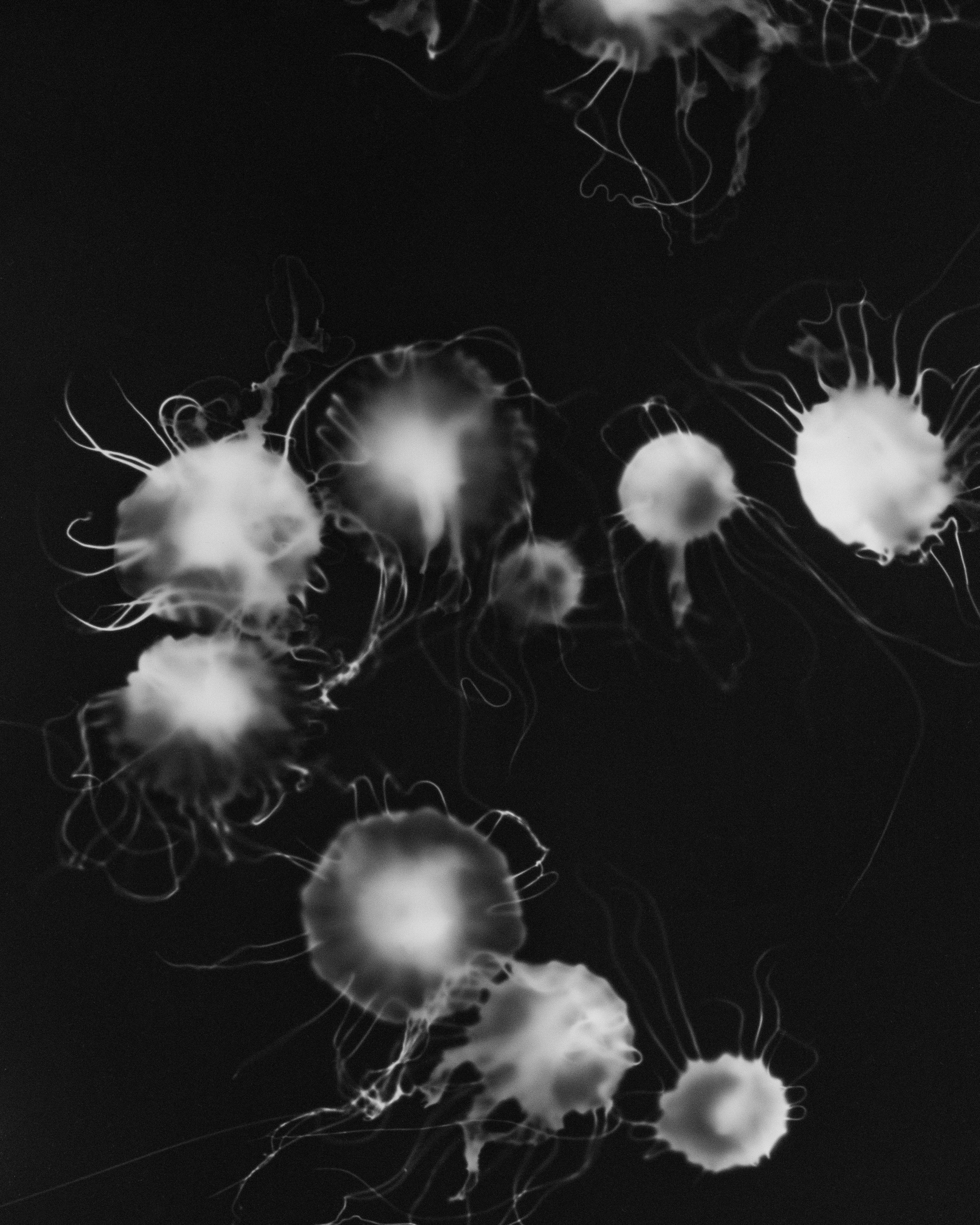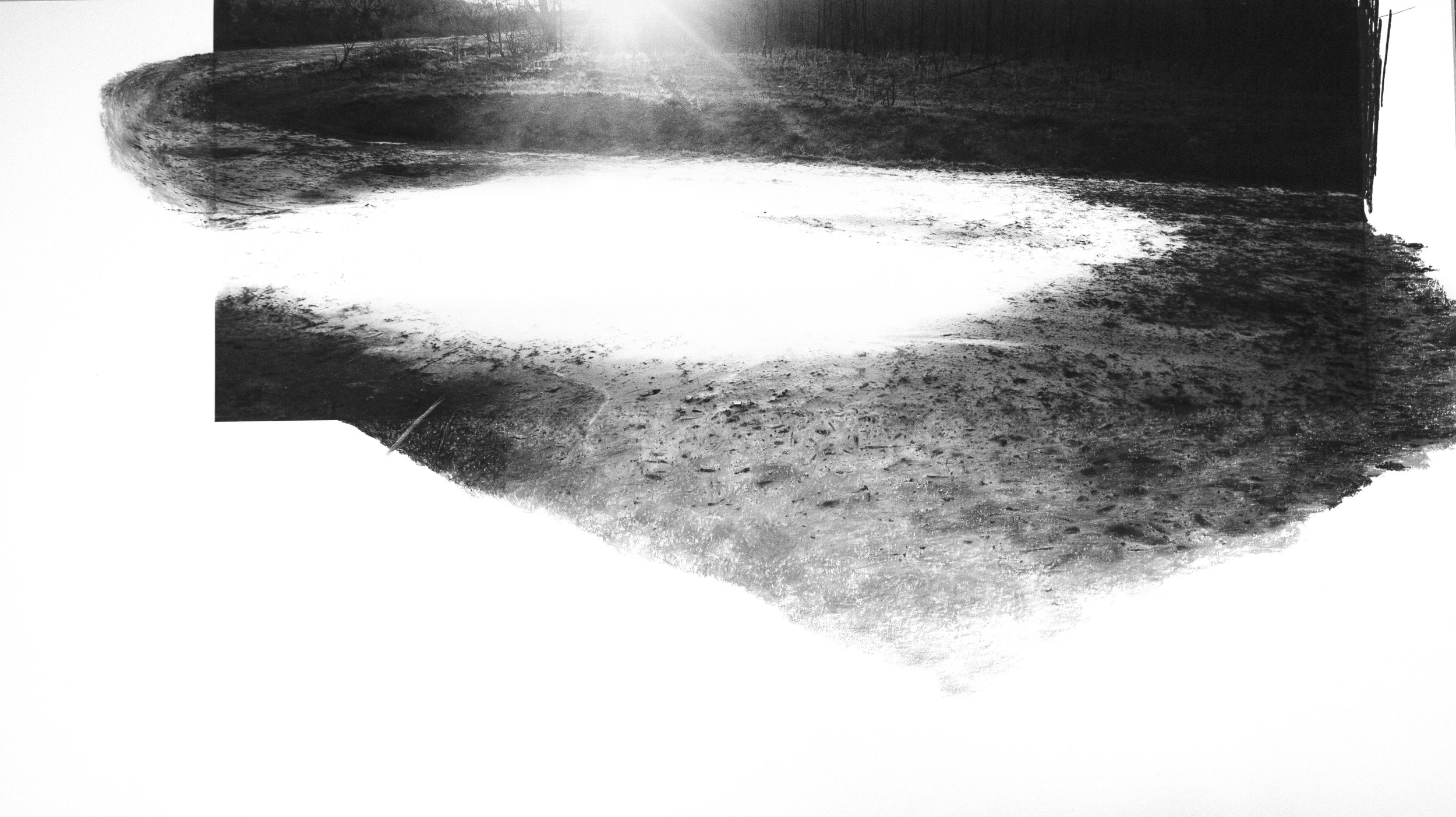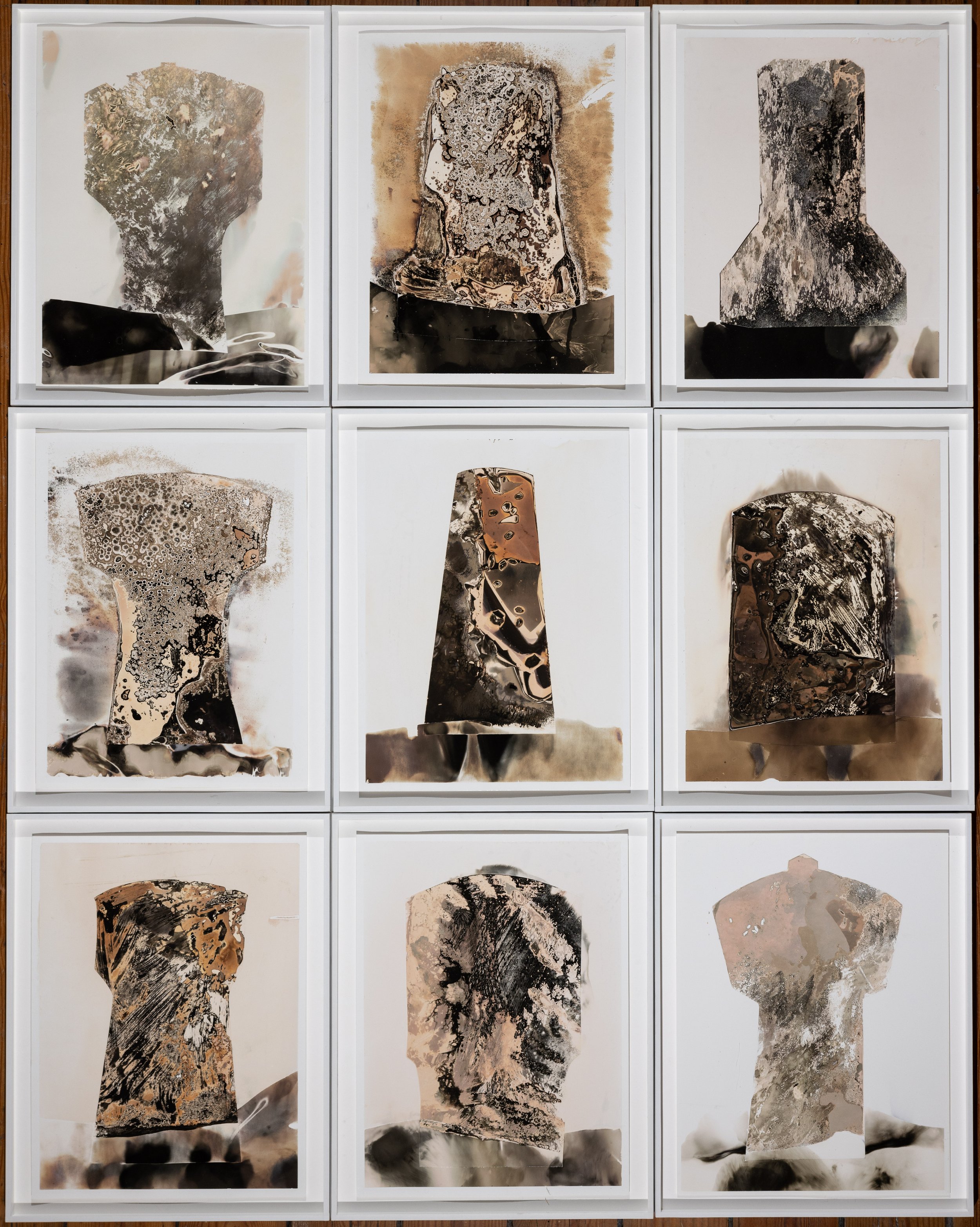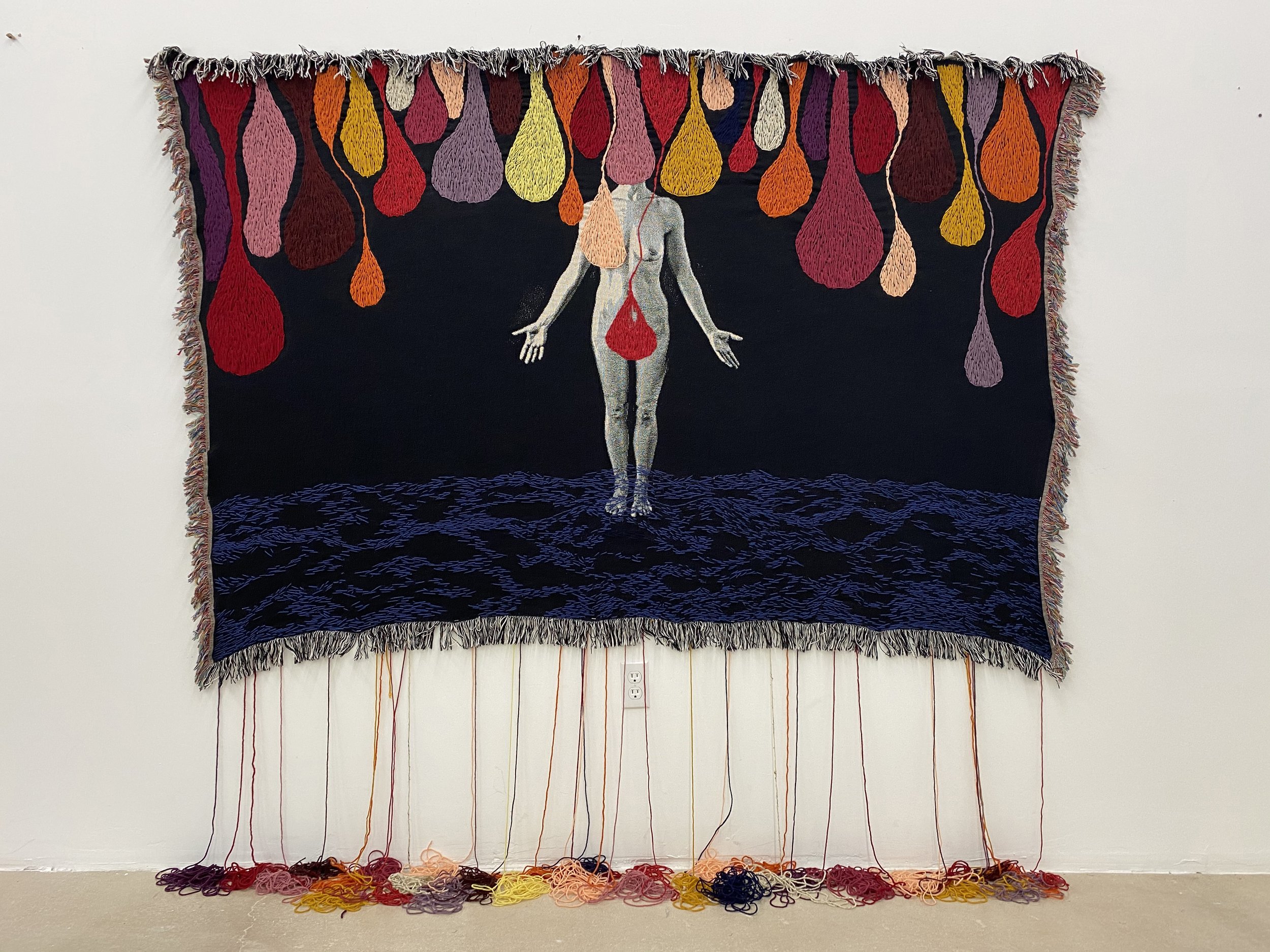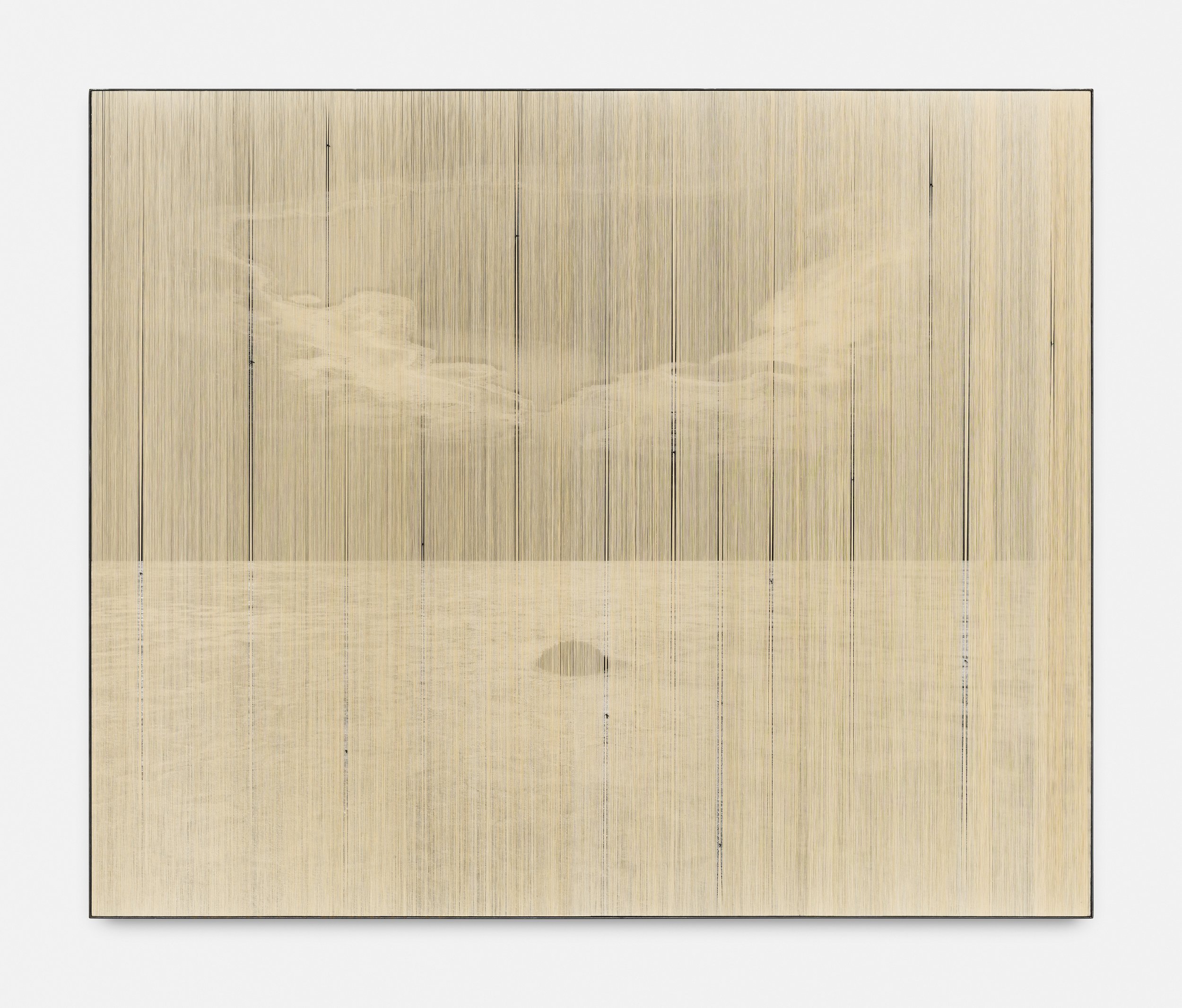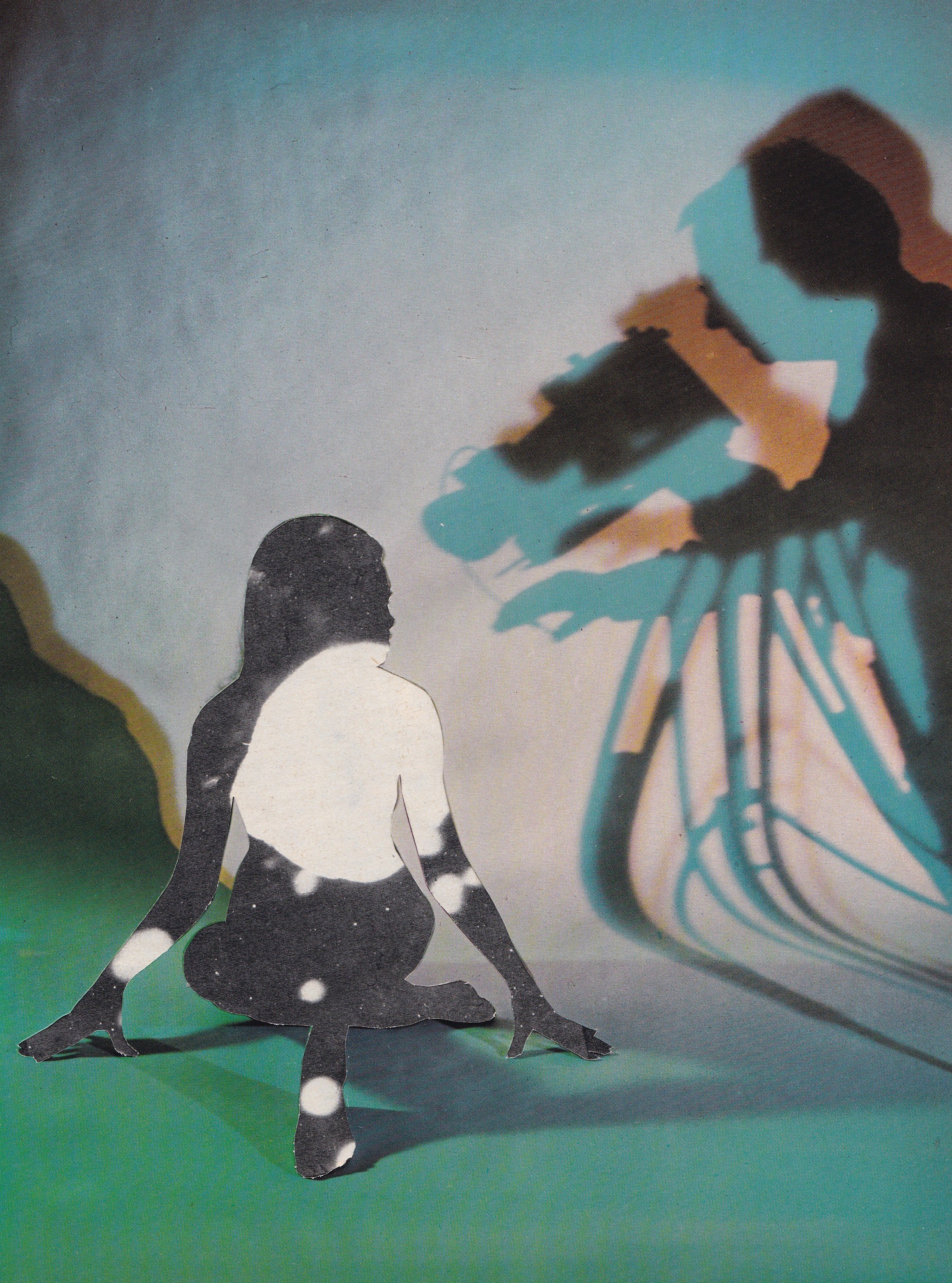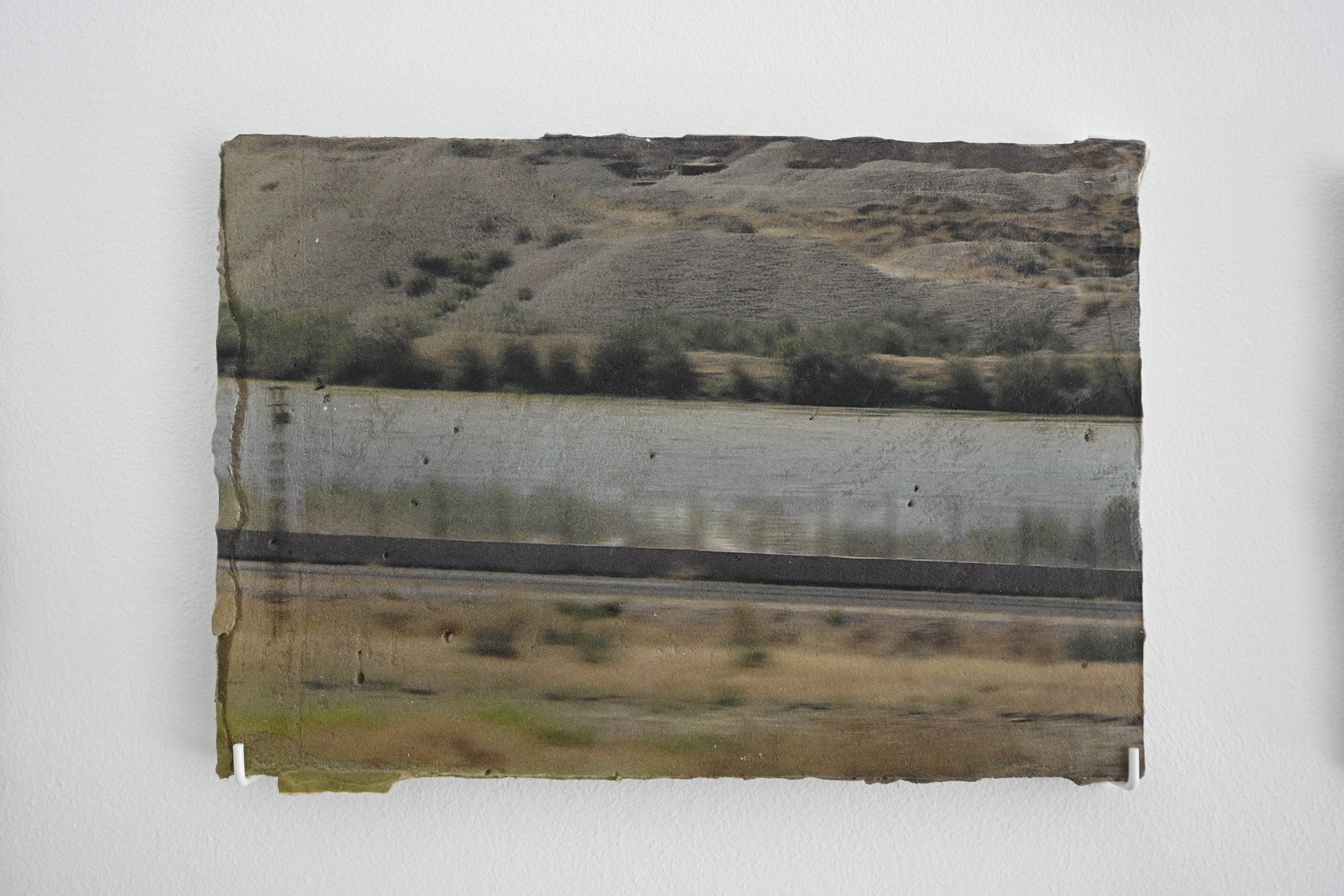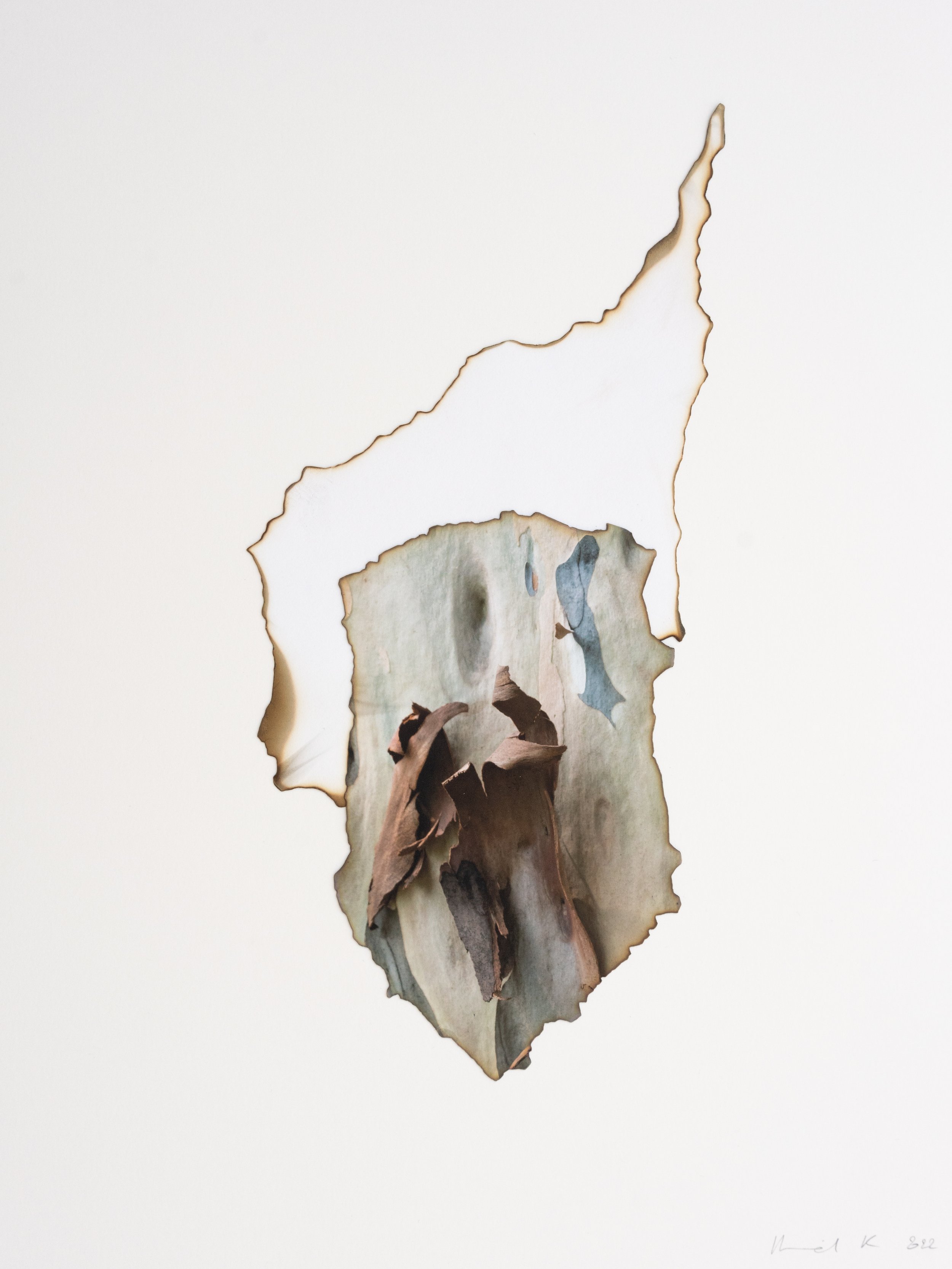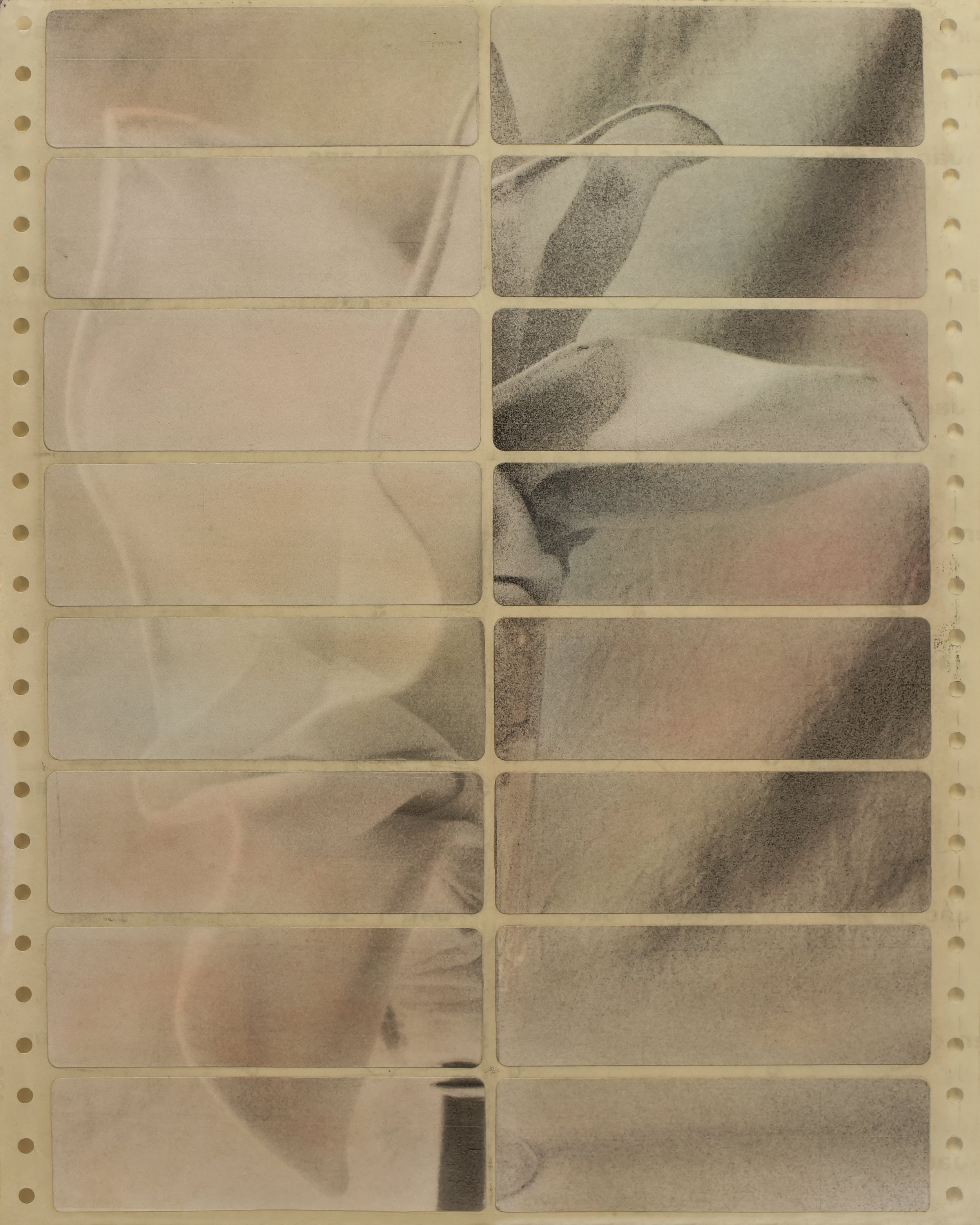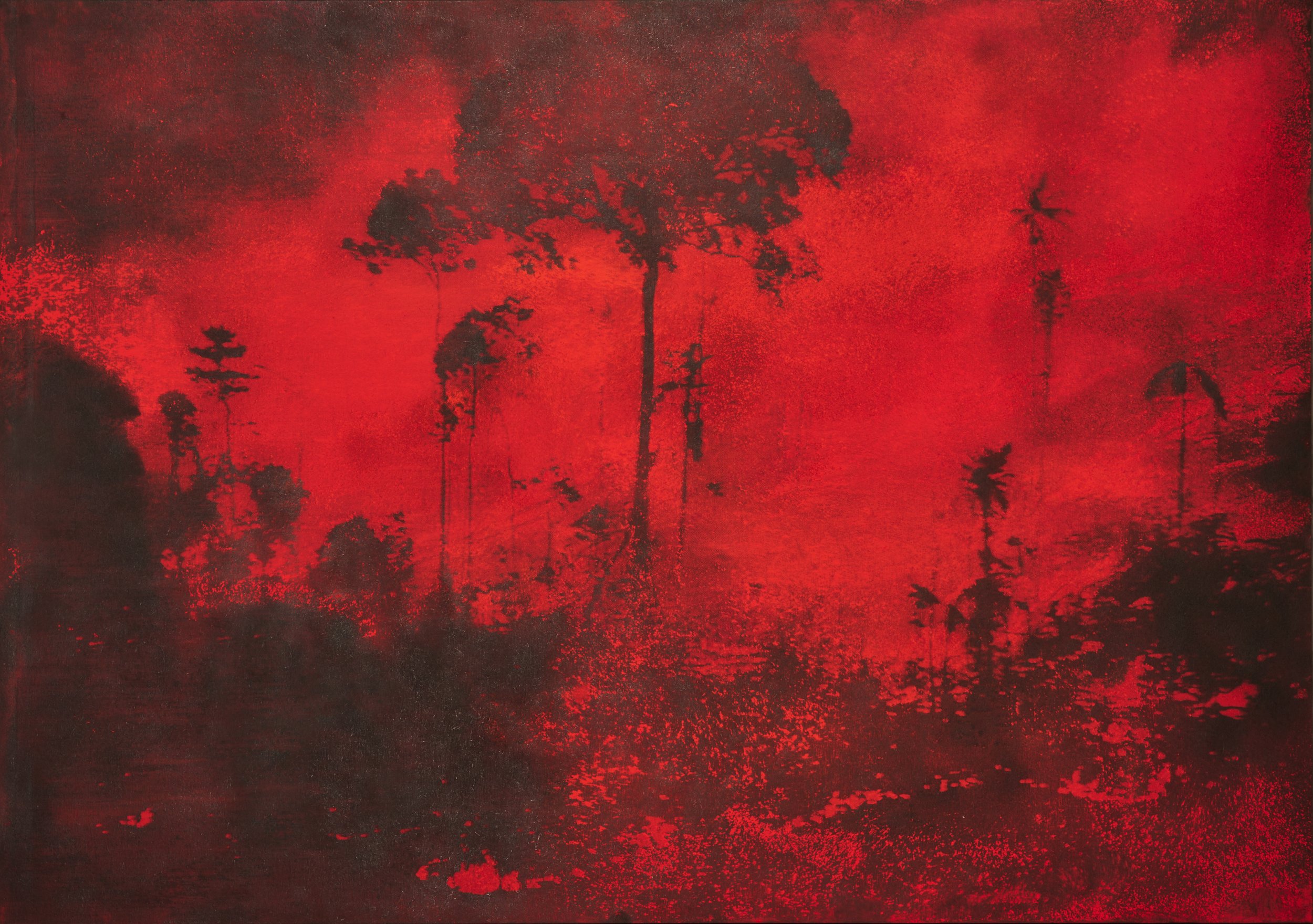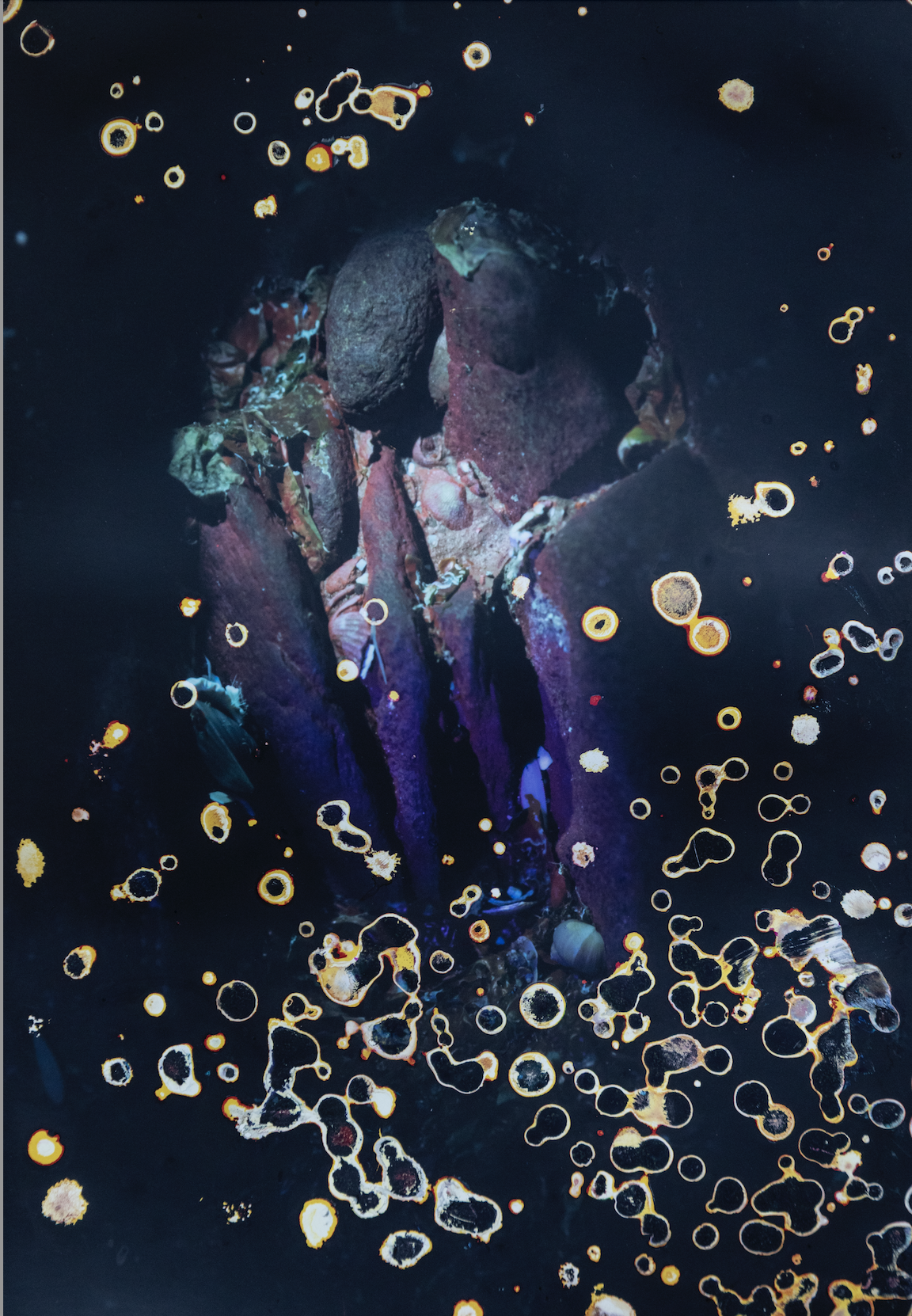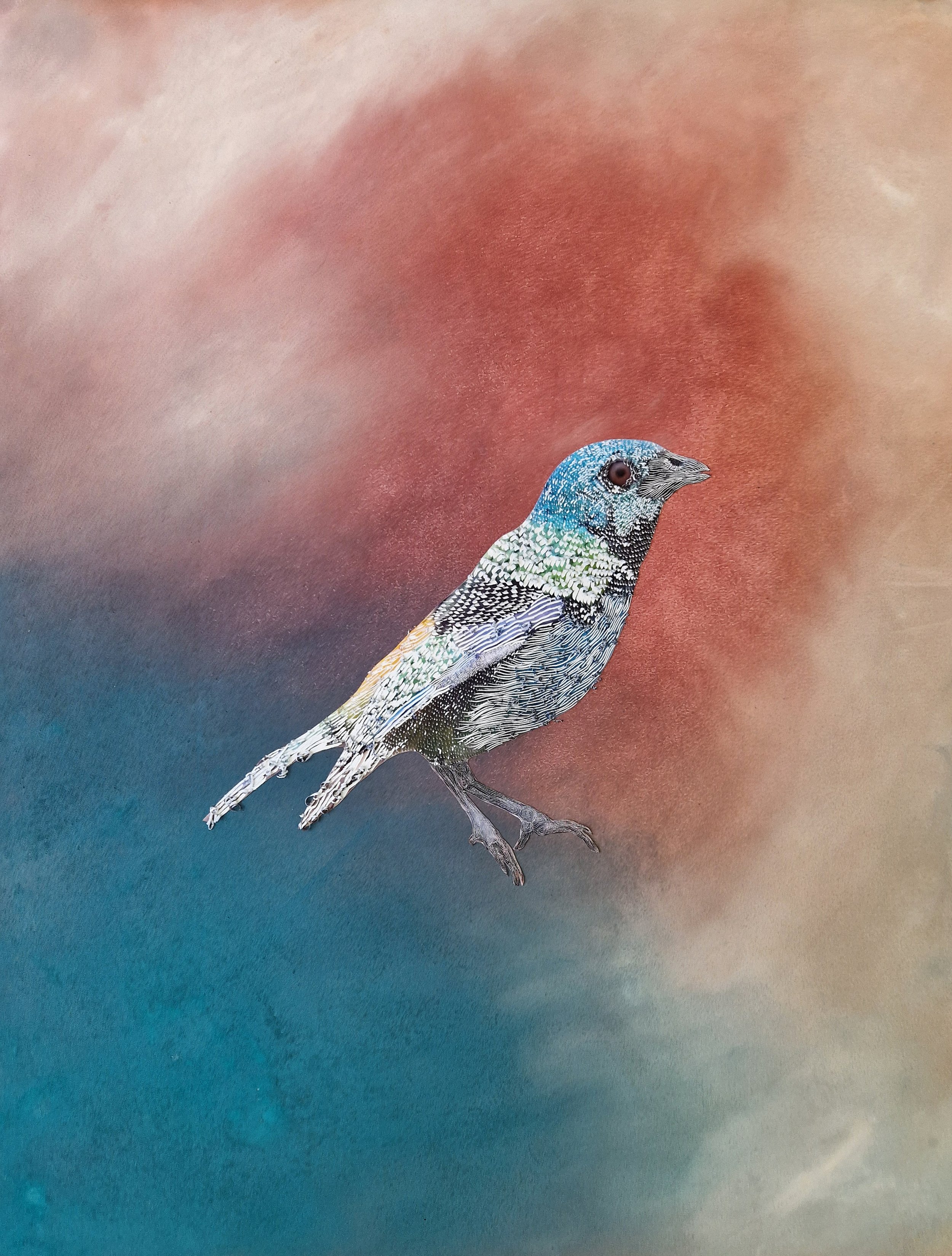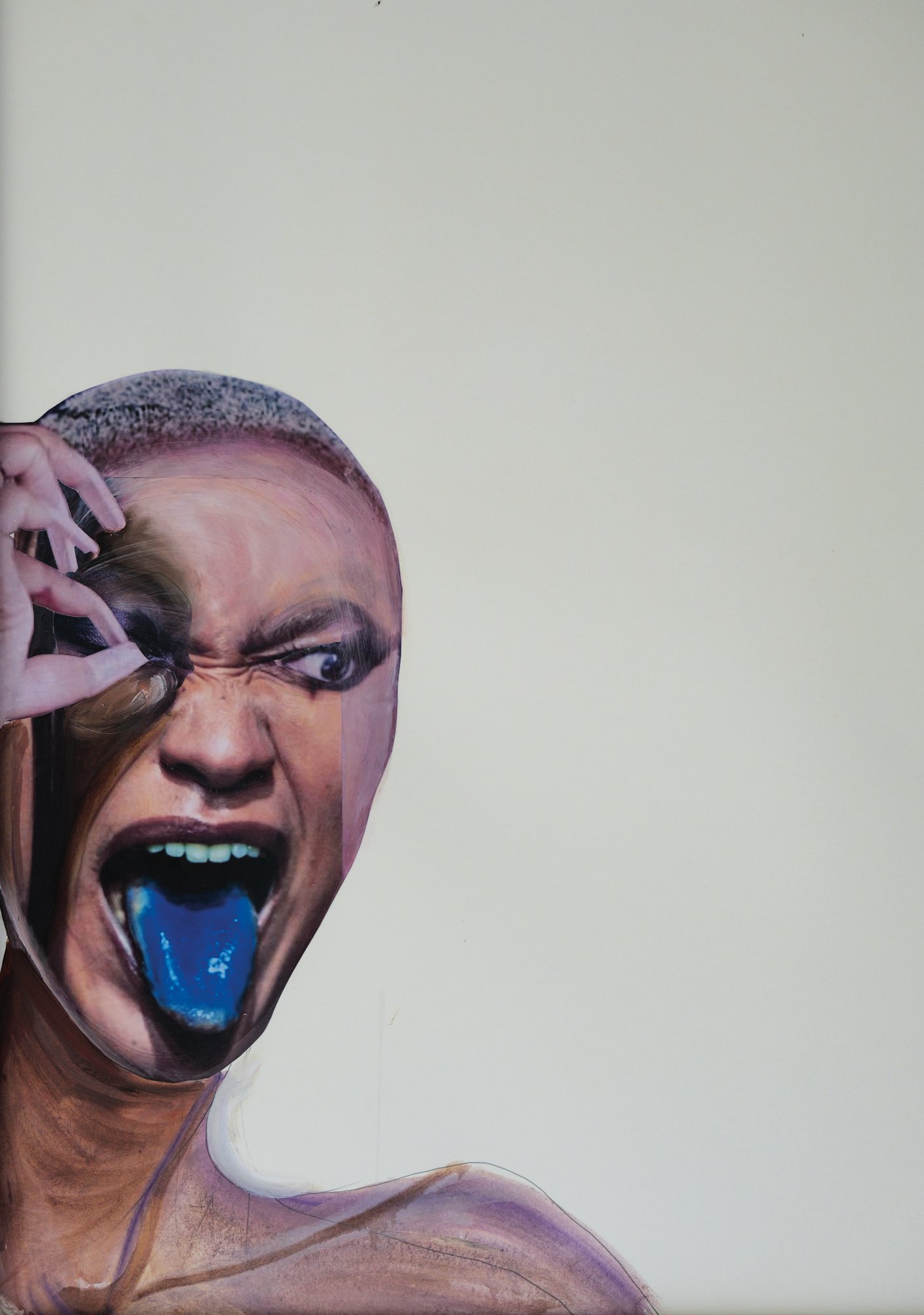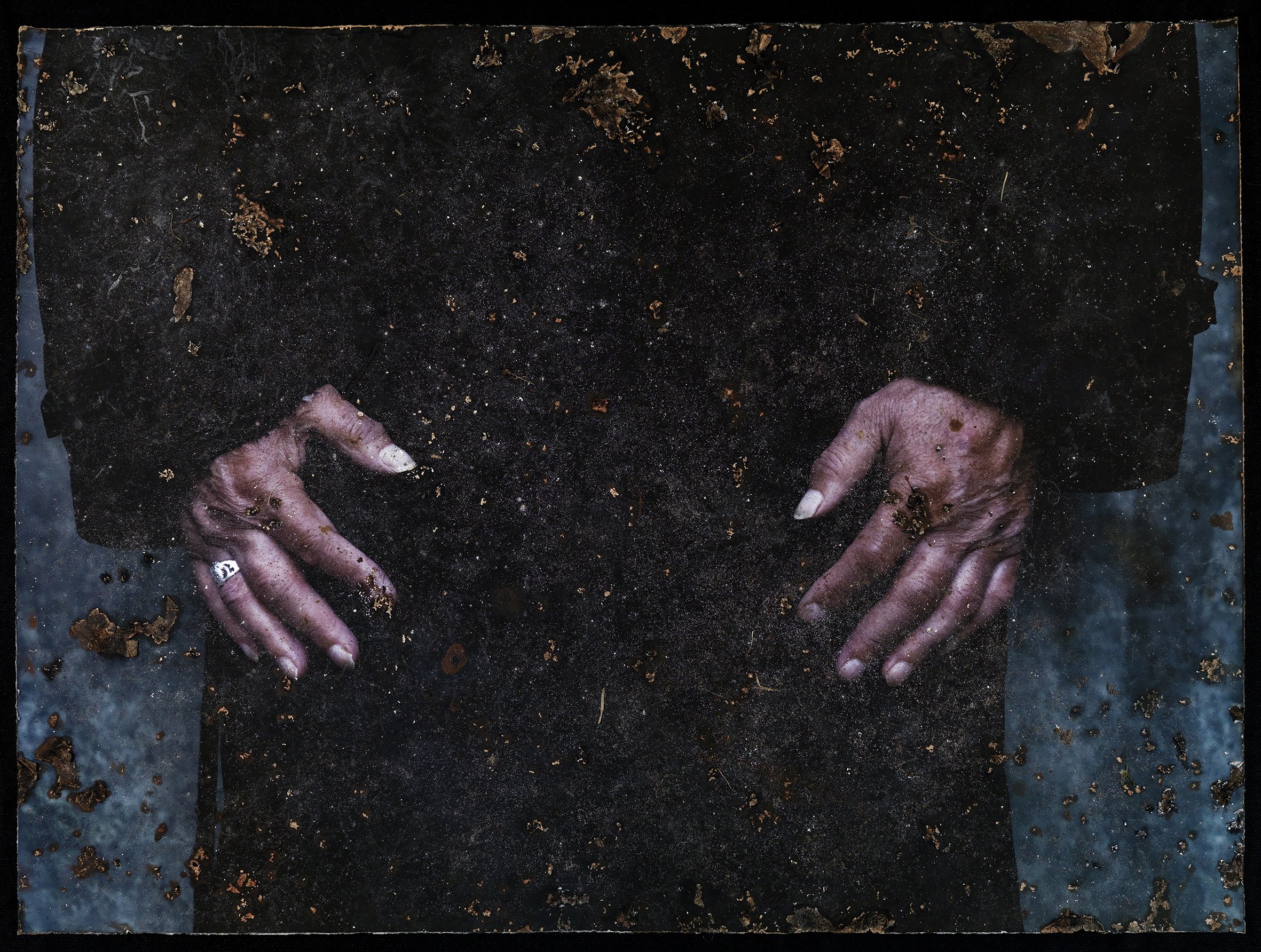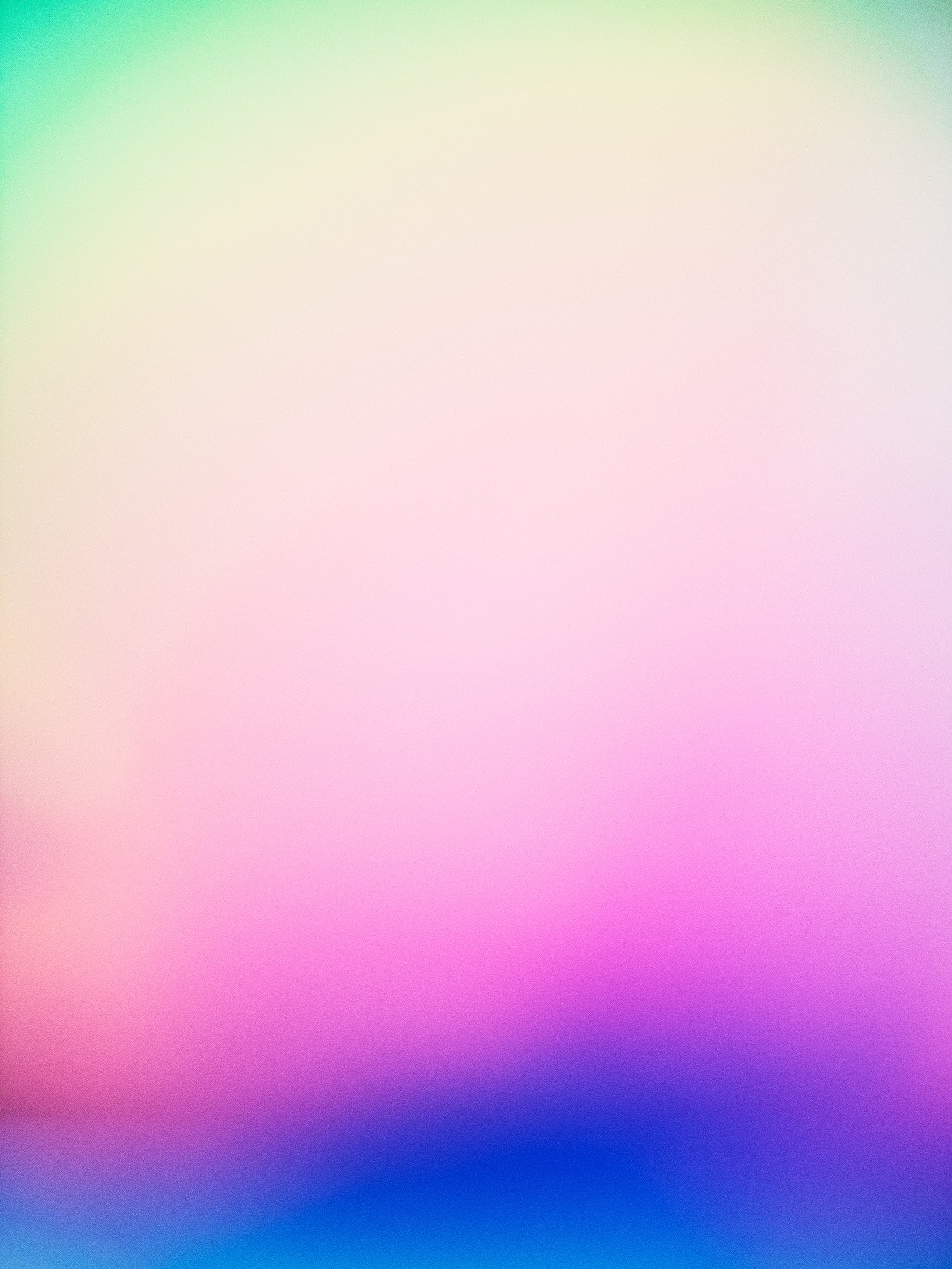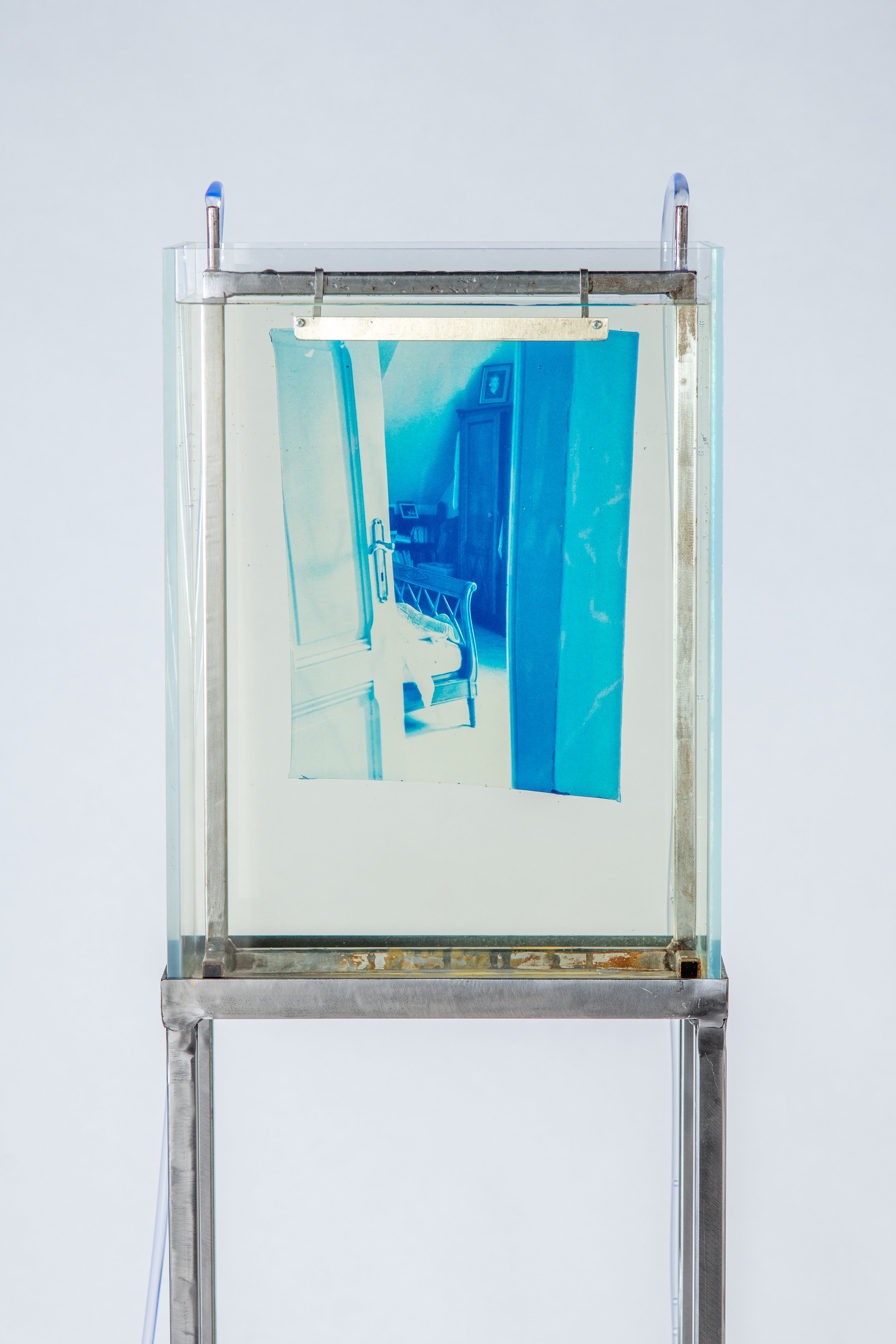
Taurus, 2023 © Audrey Guttman
UNIQUE
Beyond photography
19 April — 8 June 2024
In the UNIQUE exhibition, we explore 21 projects by artists, half of whom are under 40 and based in Belgium. What unites them is the creative gesture. It’s no longer just the photographic perspective, but the manual labor that is celebrated here. Establishing this physical connection with the artwork results in the creation of unique pieces that defy the norms of analog photography and oppose the reproducibility of digital photography.
(BE, 1984), lives and works in Brussels (BE).
Ville-Nature, 2023 - 2024
The project Ville-Nature questions the place of non-human life in our urban societies, and the relationship we individually and collectively maintain with it. Nicolas Andry does so by focusing on the trees and climbing plants growing between sidewalks and facades, in this blurred space that belongs both to the public and private sphere.
-
The artist has chosen a systematic approach to photography, ‘à la Becher’: while remaining a subjective viewpoint, this constraint relieves him from the ‘what and how to photograph’ to make room for curiosity and surprise. The repetition thus obtained transforms the anecdotal into nuances, and will into observations: a fertile ground, rich in testimonies. Like an echo between content and form, the prints made combine silver papers, products of industry, and natural developers. They then restore to this precise art of reproduction and conservation that photography has become a random, organic, ephemeral, unique character.
(PE, 1976), lives and works in Tarapoto, Upper Amazonia (PE).
L’inconscient des plantes médicinales, 2023 - 2024
Plants communicate with each other and with their environment. They are not inanimate beings; they use light and chemical processes to feed, communicate, and interact with animals. Pepe Atocha’s approach to this particular universe, involves analog photography because, like plants, he uses light and chemical processes to achieve his goals.
-
In this series, Pepe Atocha worked with the flora of the Peruvian Amazon, merging each plant with its environment in double-exposure photographs, on which he intuitively intervenes: drawing points and/or lines symbolizing the movement of insects and the fluctuation of the chemistry they emit. The fact that we do not see it does not mean they do not exist; the visible is just a part of reality.
Text written in collaboration with Alejandro Castellote, exhibition curator.
(FR, 1982), lives and works in Saône-et-Loire (FR).
Crawling shadows, 2024
Like ivy or a vine, silver gelatin clings to the chosen supports to merge with the wood fiber, the roughness of the exhibition wall, or the texture of the paper. By questioning our relationship with the image, the process allows for a reflection on our connection to life. By transposing the skin of the image, or a fragment of the «world,» the act of «mue»* allows for a physical and poetic uplift.
-
This induces a metamorphosis that enhances the organic and sensitive dimension of the photographs, resonating with landscape transformations. This resonance is even stronger when it comes to images related to nature, such as those resulting from forest research since 2020, which give rise to the series Crawling Shadows akin to a forest fable inscribed in the temporal context of a decade of climate change. These works presented converge through the territory they evoke, the sinuosity they unfold, and the hypothesis of an emergence, inducing a particular relationship between the registers they embody: the vegetal, the animal, and the machine. These elements allow for a renewed understanding of what constitutes a forest today, between mythology, fascination, and roaring reality, supported by the poetry of an action and the shivering of matter.
*An orphaned process, it is an almost organic migration of the image substrate that opens up new futures for photography. Cf: POIVERT Michel. (2022). Contre-culture dans la photographie contemporaine. Editions Textuel, Paris.
(BE, 1992), lives and works in Brussels (BE).
Perspectives submergées, 2024
This series of photograms plunges us into the phenomenon of jellyfish proliferation. The term «gelification» of the seas has recently emerged to characterize the overpopulation of these stinging animals drifting by the thousands on beaches. Between overfishing, plastic proliferation, warming, and acidification of the waters, jellyfish thrive on the disruptions caused by humans.
-
Generally, any action that harms marine ecosystems is favorable to them. Many human activities thus suffer from the multiplication of this invasive marine species. This proposal examines the turbulence of Mediterranean waters: could it be possible that jellyfish are actors in an ecological and political resistance to the violence induced by humans? In partnership with the Nausicaa aquarium (Boulogne-sur-mer), Aliki Christoforou worked with live jellyfish. She wanted to capture the immediacy of their passage. This is rendered by the photogram process: their imprint is deposited on the paper after the light has passed through their translucent bodies in motion.
(RO, 1979), lives and works in Paris (FR).
Strange place for sunrise, 2023-2024
What imprint remains of our memories once they have passed through the prism of time, subjectivity, and illusions? Strange place for sunrise was born from the desire to preserve the memory of a place, to play with presences as well as absences, to extend the sensory through the imaginary to reinvent an immersive walk, oscillating between reality and fiction.
-
This project takes root in the reality and materiality of a location in Romania, a place dear to the photographer. Dana Cojbuc intervenes on her works through drawing, extending and interpreting photography beyond the frame of the image and creating new connections between different spaces. The extension of reality through drawing allows viewers to enter the realm of interpretation and to extend the immersive work through their own imagination. The landscape becomes a sanctuary, an island of refuge and salutary isolation. In a desire to move beyond two-dimensionality to create a complete work, colored projections, like a cinema magic lantern, dress and move the work with blue reflections. Suggesting both the sky and the water, the blue light gives these scenes a magical and unreal aura, thus enhancing the experience of poetic contemplation offered by Strange place for sunrise.
Extract from a text by Éléonore Simon
(BE, 1985), lives and works in Brussels (BE).
Followers, 2024
Followers is an exploration of image production and its emotional resonance, seamlessly intertwined with a reflection on the representation of the ego in the digital age. Antoine De Winter delves into themes of transience, humanity, and contradiction through photography, while probing the depths of image sanctification and ego in our current society.
-
Followers takes us on a temporal journey, inviting us to contemplate the origins of images and their contemporary production methods. By combining the generation of portraits through artificial intelligence with their transposition via ancient silver processes, Antoine De Winter bridges the gap between past and present. Followers series urges us to rethink the power of images, to evoke emotions, and to shape our perception of the world. It highlights the complexity of the relationship between image production and the iconic use of self-representations on social networks, while inviting us to meditate on their profound and often elusive impact on our understanding of ourselves and our reality.
Extract from a text by Éléonore Simon
(AT, 1966), lives and works in Brussels (BE).
Becher Variations, 2020
Gundi Falk employs the process of chemigram, learned alongside Pierre Cordier (1933-2024), pioneer and creator of the chemigram in 1956. The works are created without a camera, in full light, combining painting, etching, and photography in unconventional ways. The title of the series alludes to the work of the famous photography duo Hilla and Bernd Becher. Gundi Falk was particularly drawn to their repertoire of industrial buildings.
-
«Before Gundi Falk’s project, there is a desire to question two photographic movements that emerged in Germany after the 1950s, Otto Steinert’s Subjektive Fotografie and Hilla and Bernd Becher’s Objektive Fotografie. Afterwards, there is a subjectively reappropriated, radically free, interpretation of the works of Bernd and Hilla Becher. Often punctuated by nine separate elements, the chemigrams explore a plastic syntax based on seriality and erasure (...) Through variations of light, Falk’s creations lead us on an archaeological adventure. From these monumental buildings, only spectral silhouettes remain, the curious letters of a new alphabet, hybrid creatures, between stone and mushroom, between inanimate and animate. They confront us like geological creations emerging from the earth without the help of human hands. Gundi Falk creates anatomical charts of forms in neglect.»
Excerpt from the text: Variations & Transmutations - Véronique Bergen
(AR, 1970), lives and works in Miami (USA).
Photo-based textiles, 2019
Marina Font continues her exploration of the complexity of the human psyche and its inner threads, aiming to deepen her relationship with the multiple interconnected factors that constitute feminine identity. This series is based on a black and white photograph that the
artist took over 10 years ago.
-
For this new installment, the photo has been printed on woven blankets, which the artist then «dressed» with knitting wool. Born during the pandemic, this series uses the «blanket» as a metaphor for the need for confinement, embrace, protection, and the intervention appears as a reaction to the socio-political anxieties of the time, as a visceral response to calamities that occur outside the «utopian» security of civil society, the «utopian» security of our homes. Through the combination of drawing with woven thread, she aspires to approach what escapes control and reason, seeking to convey aspects of the human condition through a universal and recognizable gesture. The body thus becomes a topographical surface and a complex receptacle of memories and emotions, opening a dialogue between biology and psychology, between our person as such and our intimate sphere.
(IL, 1977), lives and works in Siena (IT).
Knots in Space / A Journey on Foot IX, 2021
Knots in Space and A Journey on Foot IX stem from traversals—long walks in arid places, during which fragments of landscapes were photographed. Then, the photographic image is connected to another, from a different place and time, to construct the illusion of overlapping perception.
-
The use of thread from various sources (cotton, silk...) and the repetitive gesture of weaving evoke time and silence conducive to meditation. It gradually screens the image, incorporating a visual impairment that goes against the immediacy of mechanized photographic recording. This allows for the dislocation of the travel experience into the domestic architectural space without losing its magnitude. This echoes the Hindu ritual of Puja, in which a thread is wrapped around a natural element to signify the connection with nature or to worship the gods. The winding of threads not only recalls existing religious rituals but aims, notably, to extend one’s own ritual, a form of evocation, which exploits the powerful experience already imbued in the initial traversals.
(BE, 1987), lives and works between Paris (FR) and Brussels (BE).
La femme 100 chambres, 2021-2023
« It’s a woman, alone, in a room. But is she, truly? Hard to say: she slips from one image to another, escaping as soon as one approaches. Her mischievous silhouette is imprinted on an old doily, then reappears, in profile, in an enigmatic collage.
-
She escapes from a photo session, leaving behind only a bright spot of light, then stretches out on a limestone rock that she reinvents as a bed. There she is, dancing: quickly, let’s capture the lively movement of her hair, on a paper left for a few moments in the sun. Through the keyhole, here she is again: is she grimacing with ecstasy or sorrow? Does she herself know? Look, a clock: it insists, yes, even time is malleable in reverie. In this game of hide-and-seek between shadow and light, between the image and its simulacrum, she plays and invites us to play with her. And to play with the very idea of reality, which is, perhaps, the only subject of photography. »
(FR, 1997), lives and works in Brussels (BE).
Limit middle East, 2023
Romane Iskaria created this series of images while she was in Southeastern Turkey, near the border with Syria. Taken through the window of a car, these photos are the result of the artist’s observation of this sensitive area, an impassable zone between these two countries marked by numerous territorial conflicts and formerly traversed daily by ISIS forces just a few years ago.
-
With these images captured on the fly, Romane Iskaria aims to shed light on these lawless and surveilled areas between these two countries. By transgressing the codes of documentary, particularly through the blurring of images and the evocation of storyboards, Romane Iskaria blurs the lines. The materiality of the medium - plaster - evokes both the ruin and the reconstruction of a dismantled and wounded territory. With Limit Middle East, Romane Iskaria invites us to question the value of visual testimony and the concepts of borders, territory, and belonging to a community.
Audrey Guttman
(IR, 1984), lives and works in Bordeaux (FR) and Berlin (DE).
This Too Shall Pass, 2022-2023
Overwhelmed by the images of the fires in Australia in 2019 and 2020, Morvarid K felt the urgent need to go there. She saw static, silent, empty landscapes and noted the overwhelming absence of life. Begun in Australia in 2020 and continued in France in 2021 and 2022, the series This Too Shall Pass questions the complexity of human perception, the mechanism of adjustment that allows us to tame the brutal, the destructive, to make Thanatos bearable.
-
The project is divided into three phases: the persistence of the past which relates to the initial difficulty of accepting the destruction caused by fire; the trace of the present, the moment of realization and the desire to be as close as possible to the issue to better understand it; and finally, the weaving of the future, the moment when the subject slips into the background and our attention turns to other things, although the mega-fires persist. At the first sight of this devastated landscape, a kind of denial sets in, characterized by visual compensation, a reassuring retinal persistence replacing the black with green. A mental weaving that fades to reveal the real. It is then time to take stock of things, to collect a tangible trace through hands-on experience. Morvarid K collects the charcoal imprints of charred tree trunks by enveloping them with monochrome risographies of photographs taken on-site. The silent voice of the trees then merges with her photographic writing. Finally comes the time for the subject’s banalization, illustrated by the use of photographic fragments with burnt edges, representing living tree barks. In this corpus, this dense mass heralds and denounces the intensification of fires. The burnt edges and the gradual disappearance of the image in favor of an empty white space highlight the destruction of forests, as well as the fading of the subject in our minds.
(HU, 1995), lives and works in Hungary.
Etiquette, étiquette, 2023-2024
Kíra Krász explores the mysterious relationship between etiquette (behavioral culture) and etiquette (label). Louis XIV, the French King, was the implementer of social etiquette, the propriety, in his court, everyone had to adhere to certain established rules. According to rumor, at the request of the gardener, the first etiquettes drew attention to the path to take in the garden to avoid stepping on the grass.
-
The table set by the Sun King was decorated with folded napkins. The master servants of the art of folding learned to fold napkins in 25 different ways. This number 25 thus becomes a magical number in this work. In the first part of the project, it also corresponds to the number of images presented in the installation composed of printed etiquettes. Some aspects of the established social etiquette at that time are already obsolete, but others still govern our social life today.In the second part, the number 25 disappears as «etiquette» constantly evolves, shaping and adapting to life’s circumstances. Kíra Krász’s pastel-colored works embody this change; they are a representation of this transformation. While the 25 folds are all part of an old strict system, the crossbreeds are much less restrictive. They can be more rebellious and individualistic, echoing the traits of their forefather’s. Printing photographs of folded napkins on labels allows these structures to be deconstructed and mixed.
(CH, 1989), lives and works in Zürich.
Retardant panels, 2023
The coexistence of industrial development and natural ecosystems has led to drastic changes, both in our perception of the idea of nature and in our awareness of this recent evolution. In this series, Douglas Mandry conveys a constellation of materials related to the rainforest - found photographs of what was once the closest representation of paradise, wood, and industrial elements.
-
Similar to preparing a canvas, reclaimed wood panels are torched by hand, creating a black background to host the found images, flocked onto the burned surface. Bright pigments, mixed with a retardant - an industrial carmine red powder used to spread over forest fires to slow their progress - are applied to the wood to depict the rainforests and their vegetation, stabilizing factors of our climate for millions of years. Based on real events and contemporary concerns, Douglas Mandry brings facts to a place of wonder, where only the viewer is the judge of what they see. The artist invites us to contemplate the potential interplay of loss and the desire for control that characterizes our modern society.
Text: Taco Hidde Baker
(FR, 1995), lives and works between Paris (FR) and Brussels (BE).
Algues maudites, essential photosynthesis, 2024
After the first chapter of the series Algues maudites, a sea of tears, Alice Pallot continues to focus on the environmental and health issues related to the proliferation of so-called toxic green algae in the Côtes-d’Armor region of France. In a new photographic and experimental installment, presented for the first time at the Hangar, Algues maudites, essential photosynthesis delves into climate change and thus the sunlight radiation, which is one of the main causes of the green algae proliferation in the Bay of Saint-Brieuc.
-
How to make visible the sun’s red radiation contributing to their growth? The photographer develops, on site, with the assistance of scientists from the University of Rennes 2, a setup of artificial lights revealing the sole red light spectrum of the sun used by the algae for their photosynthesis. Alice Pallot unveils a series of unique images of ecosystems threatened by algae decay, in a context where the environmental crisis has become a major issue. For 2 to 3 weeks, Alice Pallot grew algae cultures on photographic prints, a process that allows us to experience anthropogenic toxicity not visible in the natural environment, which is imprinted on the photographic print and becomes the substrate for the algae.
(FR, 1989), lives and works in Paris (FR).
Les disparus, 2023
Silva avium project, which includes Les disparus, is the result of a journey undertaken by Raphaëlle Peria in Indonesia. The beauty of the colors and the songs of the birds present in the markets struck her. For centuries, Indonesians have kept birds in cages as pets. In this emerging country with a growing population, the obsession with having birds at home and participating in chirping contests fuels an unprecedented demand, partly fueled by trafficking. 1615 species of birds, including 419 endemic ones, have been identified.
-
Their capture causes serious damage to nature and disrupts the forest ecosystem. 13 species of birds are threatened by this international trafficking as well as by the destruction of their natural habitat. The works created by Raphaëlle Peria from bird images show the viewer the fragility of these ornithological species. Raphaëlle Peria uses her shots as supports for a drawing-based work. For several years, she has been developing a scratching technique that she uses to reveal the white elements of the photograph. This subtractive technique evokes the memory of the presence of living beings elements that inhabit natural environments.
(BE, 1966), lives and works in Brussels (BE).
ALTERED / The players, 2023-2024
Luc Praet questions the position of the artist in relation to their peers, as well as the conscious or unconscious influence, whether acknowledged or not, of older works on their own creation. His project titled ALTERED consists of an endless series of photographs captured in museums around the world, primarily working from works dating from the Renaissance to the early 20th century.
-
Abandoning the standard reproduction process, each image undergoes deliberate alterations. This approach goes beyond conventional norms of photographic editing, creating works where each image transcends the simple notion of a copy to become a unique and singular piece. Technically, all images are captured in one go, without resorting to montage. Luc Praet then works directly on the substance, going beyond the traditional conception of photography. He modifies the material and alters its support, seeking not to faithfully reproduce, but rather to present his personal vision while leaving room for the viewer’s interpretation. The Players is the new series of the ALTERED project. Luc Praet seems to push the boundaries of the artistic experience even further. In this unique and bewildering adventure, we are faced with a particular demand, in which the artist skillfully manipulates our perceptions as spectators: can we really be sure of what we are seeing? Luc Praet succeeds in transporting us from the classical repertoire to the most contemporary, prompting the eye to adapt, to discern reality behind appearances.
(DE, 1965) lives and works in Düsseldorf.
LE NOIRE DE…, 2023
Inspired by the female heroine of the film of the same name: La Noire de ... from 1966 by the West African author, poet and director Ousmane Sembene. “In my version about the woman who sees no other way out than to reclaim her freedom and self-determination through suicide, she lets all the anger, resistance and her attitude be felt, refects and even appropriates ‘whiteness’, and rejects all certainty even with the male pronoun.” - Anys Reimann
-
INCARNAT (Love Circle), 2024
It's about the complexity of intersectional experiences, of external attributions and/or fetishization, about drawing attention to gaps in western-centered cultural concepts and undermining a one-sided reading. Anys Reimann’s works oscillate between dissolution and personification. Unlike the term used in art history, she uses the technical term INCARNAT to describe the flesh-colored skin tone for all skin colors. Far from affiliations based on origin, genetic predisposition or the socialization of individuals, the focus is on fluid identity negotiations. Beyond personal characteristics and physical features and their ascribed significance, the focus is on the individual, as well as on becoming related to one another, being related and to sensitivity, intimacy, and physical closeness.
Grey, wet days turn into rainbow streams
that cut reality into pieces
into new bones for dreams
into stories with unheard speeches Bodies, structures that belong to nature
Growth, magic, new personalities images of where the bird had flown
and beings in bizarre posturesAnys Reimann
(BE, 1969) lives and works in Belgium.
Mains, 2019
The hands belong to the Dutch artist Armando, who passed away in 2018, whose work has always been marked by his childhood in wartime. Rumor has it that he stabbed a German soldier with his hands when he was a 17-year-old boy during World War II. In 2018, the photography Mains was first buried. It remained under the leaves for six months and resurfaced in daylight about a year later, in 2019.
-
Snails and other insects ate the photographic paper during this time. The slowness of the «decomposition process» pleasantly contrasts with the short shutter speed of the photo. We can consider it as a further development, not in the chemicals of a darkroom this time, but in the process of the nature surrounding us, which is always predominant.
(BE, 1991) lives and works between Paris (FR) and Brussels (BE).
Time capsule, 2023-2024
Laure Winants sets up her artist’s studio in the heart of the Arctic ice park. Embarked on a four-month polar expedition, she joins a multidisciplinary team of researchers to understand the evolution of this vast territory, where humans are but a tiny part of life. Immersed in this white desert, she employs techniques specifically developed to capture the unique optical and light phenomena of the region.
-
Using environmental sensors, the interaction of matter itself becomes the creator of the artwork, setting aside human intervention. Laure Winants makes tangible and emotionally perceptible data that highlight the interdependence of ecosystems. The artist thus creates a dialogue between art, natural sciences, and technology. From this geo-sensitive encounter, several research axes were born, the first chapter of which is Time Capsule, an experimental series exploring light and color phenomena in the Arctic. These works include prints of photograms onto which ice cuttings captured on-site have been affixed. The polarized light on the material indicates the composition of the cut. It reveals the structure of the crystals but some elements, that have been present for millions of years, remain in the shadows. By listening to the fragility of this constantly changing polar landscape, Laure Winants reveals a universe seen through the prism of nature itself, where ice and light filter our vision.
(CH, 1995) lives and works in Amsterdam (NL).
La Maison, 2023
Vincent Zanni explores the potential of photography through a rigorous analog methodology. He combines traditional and contemporary techniques such as cyanotypes and wet collodion to highlight the importance of process and materials in his work. In his recent projects, La Maison and Sights of Unary, he examines the significance of family archives and memories, exploring the interaction between imagery and societal impact. By delving into his own family archives, he questions the concept of permanence in photography and explores its evolving nature.
-
Vincent Zanni prompts reflection on the ever-changing dynamics of memory, loss, and family heritage, pushing the boundaries of conventional practices. His experimental darkroom approach and exploration of family archives contribute to the ongoing dialogue about the transformative potential of photography in contemporary society. Through the materiality and changing nature of photography, he aspires to explore the relationship between images, memories, and the evolving structure of our lives. The conclusion of this research has taken the form of the four basins of La Maison, which receive four stages of mourning work on the artist’s grandmother’s house: the archives from 1920, his grandmother’s room, the emptied house seen from the inside, and then from the outside. A fifth stage will conclude the series: the destruction of the house in 2024. These visual testimonies fixed on gelatin and immersed in the basins remind us that memories, like the house, only hold for a time before disintegrating.


